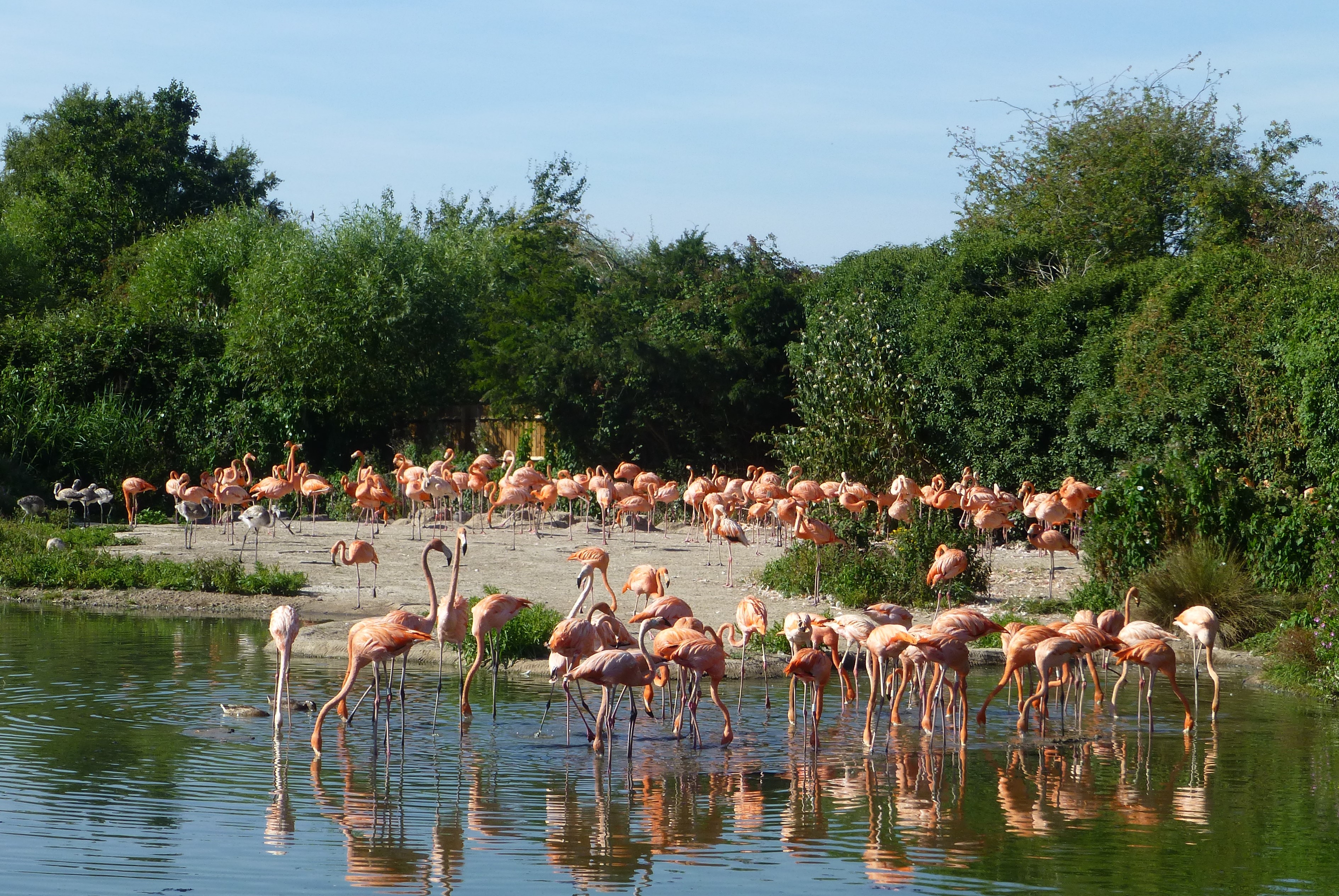Summer lull but still lots to look out for.
It's a calm time of the year in the various flamingo flocks at WWT Slimbridge. The breeding season for the big greater and Caribbean flocks has wound down and whilst there still may be activity from the Chilean flamingos it seems that activity levels really have changed in all groups. There was still some faffing around with mud, potential nest building in the Andean Pen this week, and the lesser flamingos are squabbling behind their screen of rushes but it's probably too late in the summer now for us to have fingers crossed for eggs. So what behaviour is out there to look for?
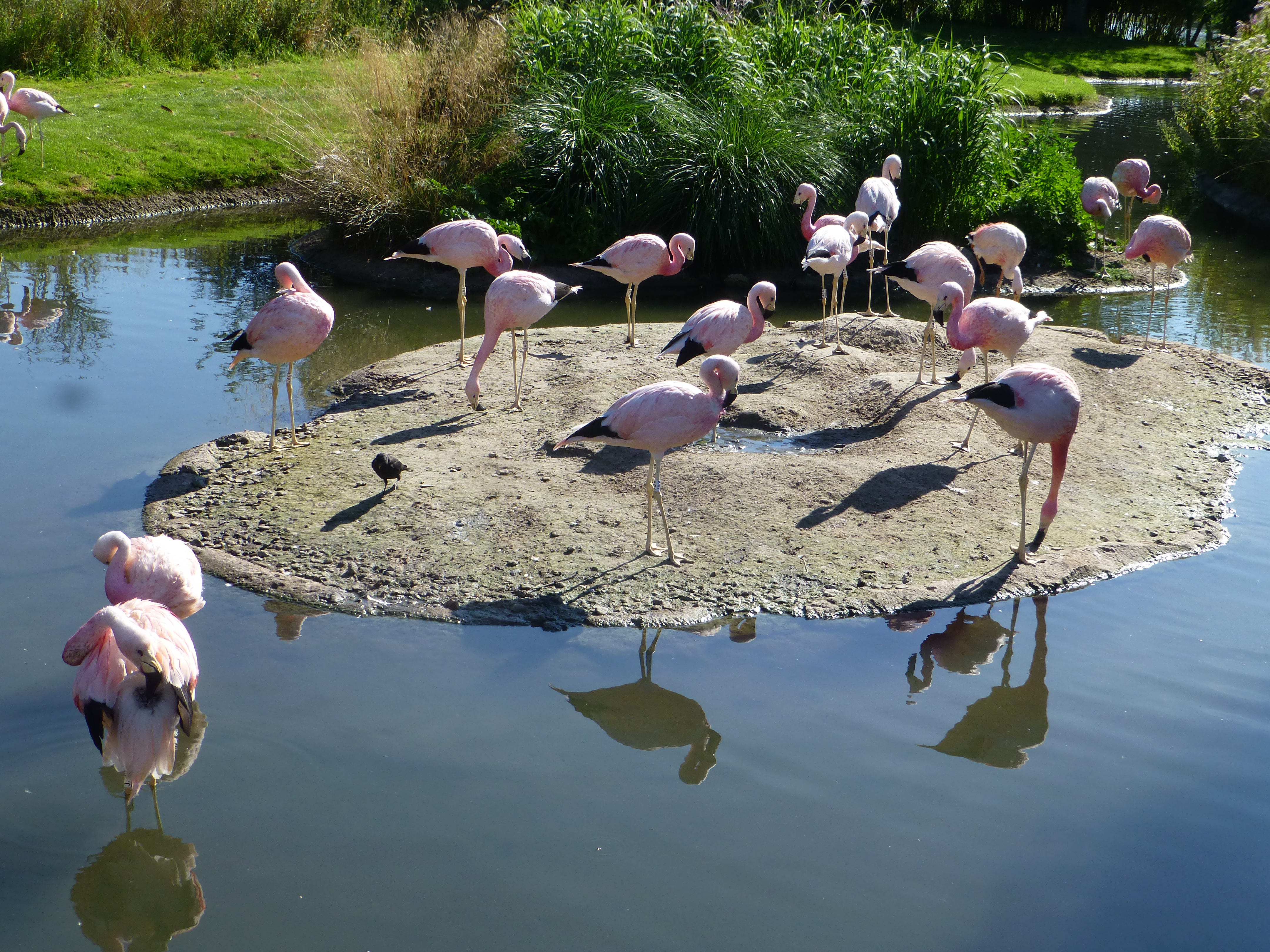
You can tell, physiologically, that things have changed if you look at the plumage of the birds. There are a few subtle clues. As I have said before, the pinkness fades and birds look more patchy (splashes of white appear more so than bright pink). But also, have a glimpse of the flamingos' primary and secondary feathers, if you get chance, when the birds preen or ruffle their plumage. These feathers are the black ones on their wings and you will see missing feathers as they fall out and the moult starts. Like wildfowl, flamingos drop all of their primary feathers at the same time and when this happens it generally signals that breeding is over for this year.
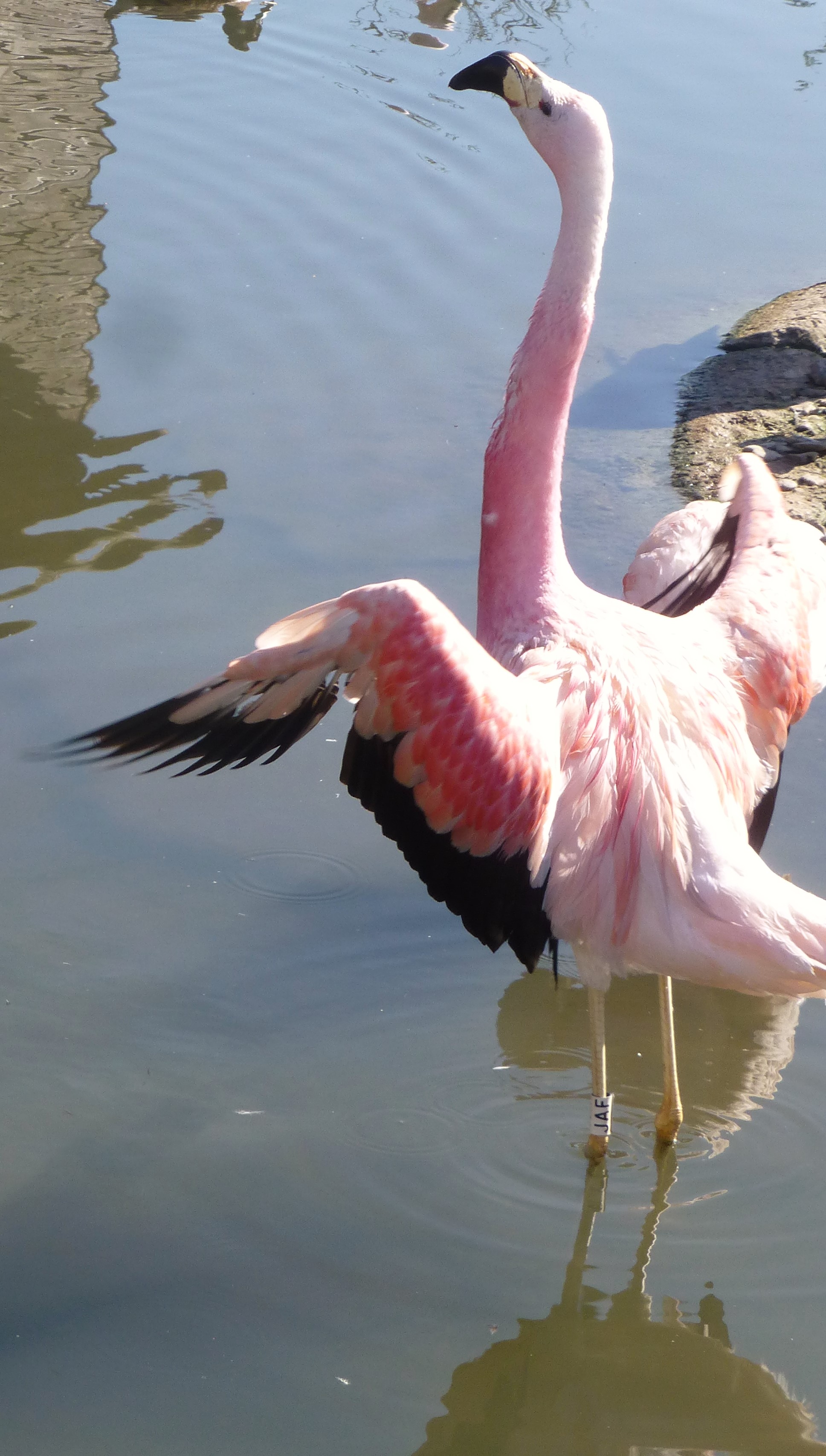
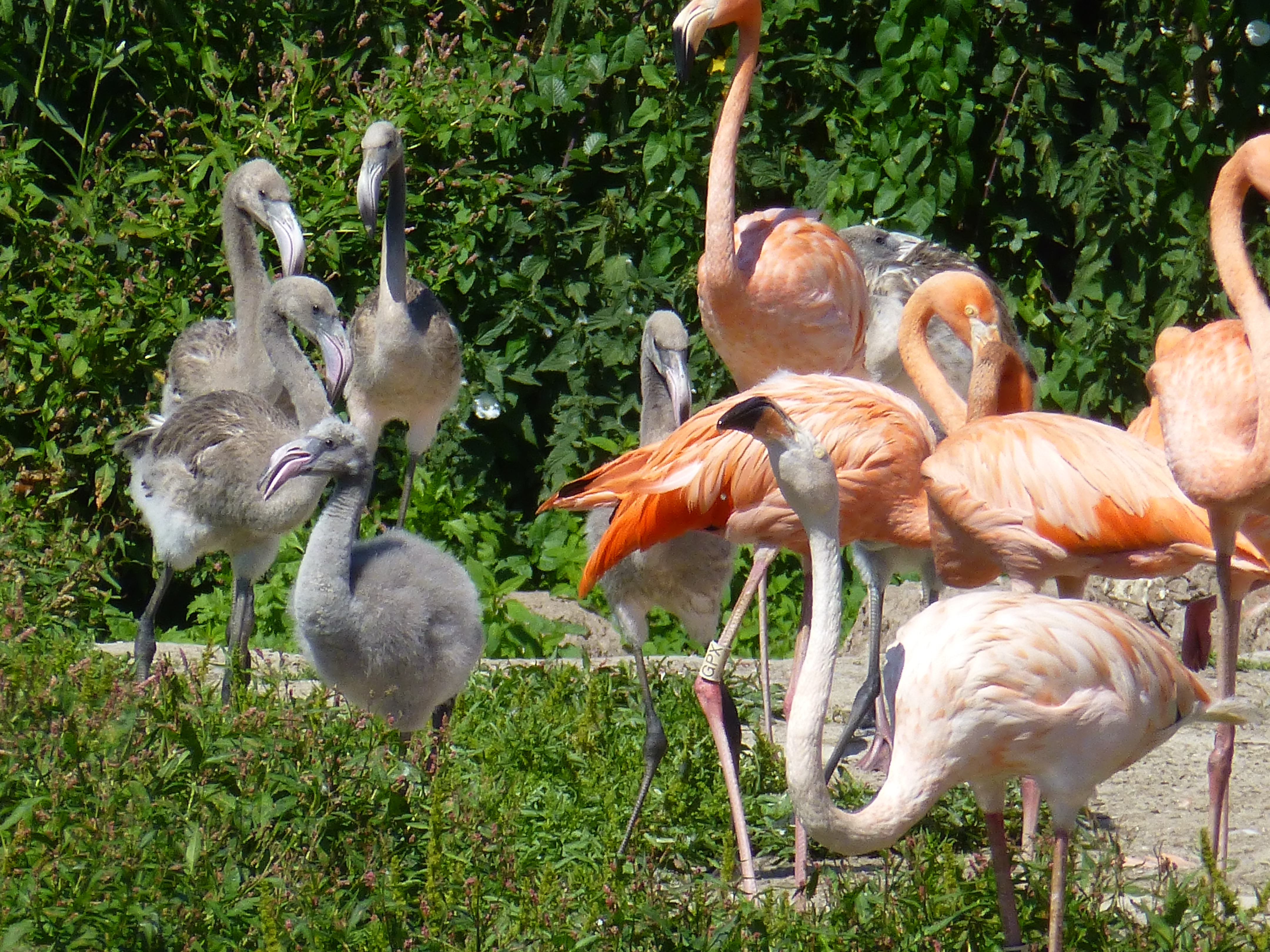
Birds that have not yet started moult may still look very smart and may be in the mood for dancing. This last week or so, several individuals in the greater and Caribbean flocks have been head-flagging and wing-saluting. Birds that would have bred last year and skipped this year, are all geared up for the next bout of nesting in 2017. Let's hope this enthusiasm spreads widely around the flocks.
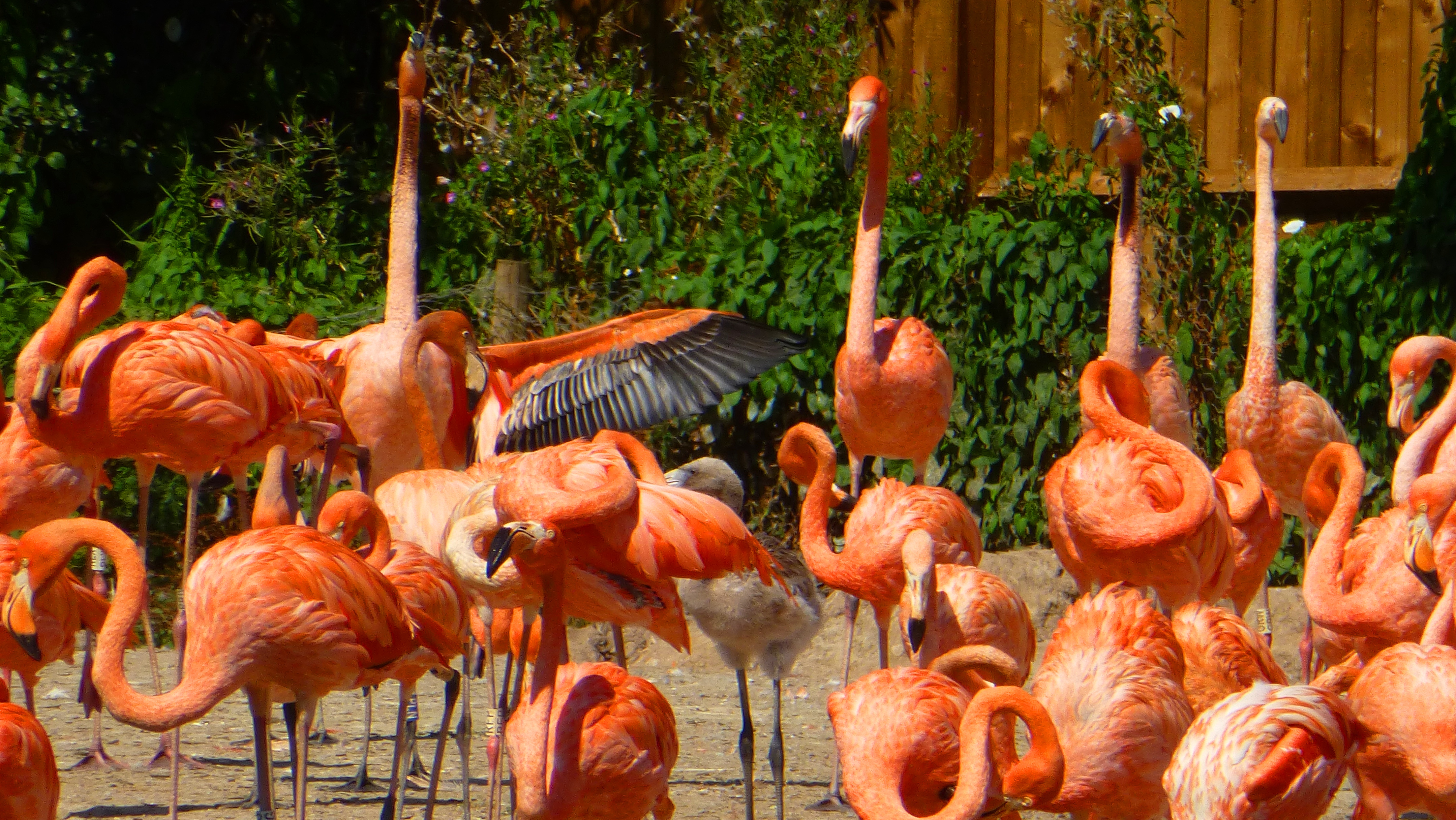
The Chilean flock has been quiet this summer but there are some scuffles and squabbles between birds. Chileans can be temperamental, and easy to lose their cool. They like being in a group, as do all of the flamingos, but they really like their personal space. Even in the middle of a hot August day, there are still grumbles between rivals. This juxtaposition of being friendly but needing space is something that scientists have long been interested in- what is the driving force behind the large flocking of flamingos together? They obviously like to be around one another, yet they can be incredibly aggressive too. This is something I will explore in a future post.
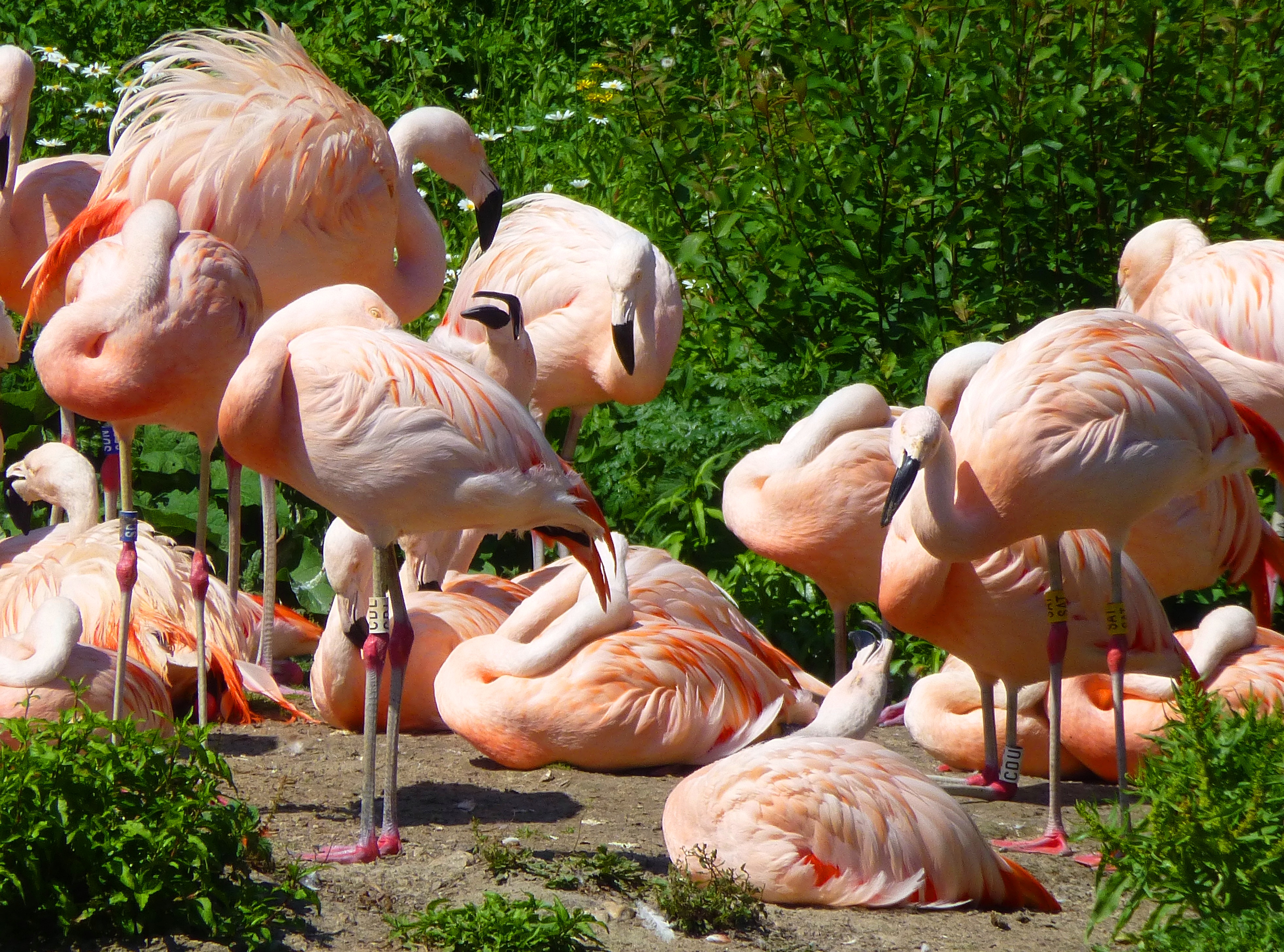
As do many human beings, flamingos enjoy a warm summers day. And whilst the adult birds in the breeding flocks may be looking a little ragged and worn-out from the demands of parenthood, there are still some interesting behaviours to observe if you get the time to watch. Not the noisy, extravert displays of earlier in the year but the soap opera hasn't fully gone away. The best time to see things going on at the moment is in the later afternoon and early evening. So take adavantage of the last of these long summer days before they turn into autumn.
